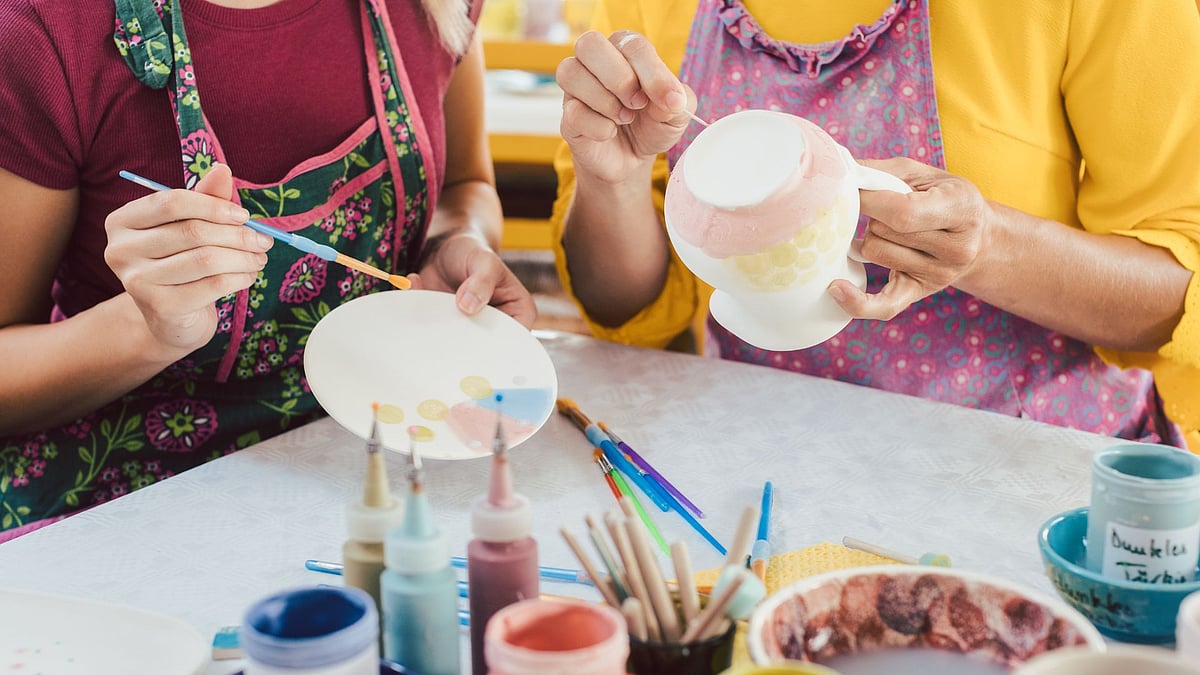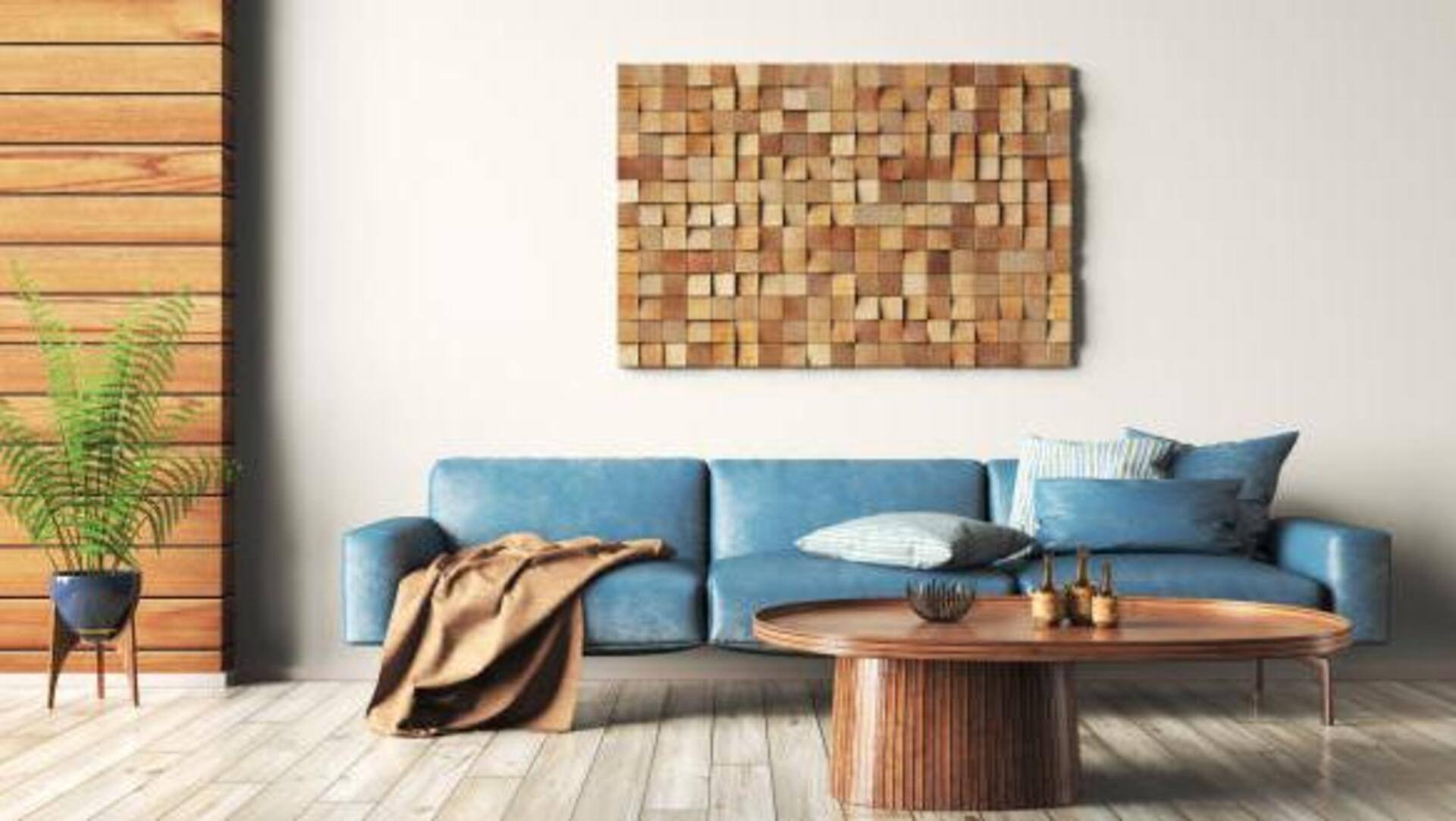From fancy dinner sets to decadent wall hangings, the art of painting on ceramic surfaces is everlasting and eye-catching. Although it may be tough to start off initially, those interested in creating something evergreen and tasteful would enjoy picking up a hobby that delivers value in the long run. Here is a quick look at how you can unlock your creative juices by kicking off your journey with ceramic painting.
### Materials Used
The kind of materials required to start this hobby depend on the scale you wish to take it up on. For beginners looking for a simple pastime, porcelain paints work best for painting on dishes.
Anju Aggarwal, a seasoned ceramic painter with 25 years of experience, prefers to import her materials to ensure the best quality and output. She explains,
“There are a lot of requirements for this art form. You need a kiln for it and the paints are something you don’t get in India. All my paints and brushes, I have to import them and since you can’t keep the kiln at home, that becomes an additional barrier.”
Despite these challenges, she encourages people to take up the hobby because of how unique and satisfying it is. “It requires a lot of patience and time but the result is completely worth it,” Anju adds.
### Choice of Technique
One of the brightest points of ceramic painting lies in the sheer variety of techniques and combinations it offers. Raised paste, luster, metallic paints, and pen work are just a few mediums you can experiment with while creating your own piece.
For those opting for simple paint, try creating fresh designs by taping off certain sections of the surface and painting over the rest. To add sparkle, consider applying a layer of liquid gold at the final stage. Keep in mind that this process will take longer due to additional firing and may have a tendency to chip over time.
Anju shares an example of her own unique technique:
“You can get smaller tiles and stick them with raised paste,” she says while displaying a vase. “This is one separate art piece that I’ve stuck on another piece created using luster. My teacher was a little skeptical of how this would turn out but I knew that at the most it could fall off. But thankfully, it stuck well.”
### Fire Off
Once you’ve decided on the specific technique and design, it’s time for the lengthiest part of the process—the firing. The kiln is essential for helping your colors dry off and settle properly.
Anju explains the process,
“You do the first coat. You fire it. That is a 24-hour procedure—paint it, put it in the kiln, which takes 12 hours, and then another 12 hours to cool down. After that, you can take it out and apply the second coat followed by the same 24-hour firing process. If you want to add gold, that requires another firing cycle.”
### Precautions
With high return comes high risk, and that holds true for ceramic painting. Here are a few precautions to keep in mind:
– Paint only on the outer layers of dishes to avoid the paint coming into direct contact with food.
– Investing in finer quality materials and proper firing reduces risks, especially when painting sensitive areas.
– Purchase ceramics from reliable sources to avoid surfaces with embedded cracks.
– Faulty firing can cause pieces to break inside the kiln and damage other items being fired simultaneously.
– When operating a kiln, always work with a trusted professional or in a well-ventilated open space to avoid inhaling toxic fumes.
If executed perfectly, a ceramic piece can keep you company forever and requires minimal preservation. Gently rubbing the pieces with a clean cloth and racking them properly helps in long-term storage.
### Cost Involved
Due to the high entry-level cost associated with this hobby, enthusiasts are advised to consider taking a class or two in the beginning. Professional guidance not only helps you understand the activity better but also provides valuable insight on sourcing materials and receiving constructive feedback.
For those who prefer to keep this as an at-home interest, the cost of materials and ceramic surfaces is comparatively less. Regardless of the level you choose to pursue, the advantages of creating your own pieces from scratch far outweigh the material costs.
As Anju puts it,
“Once you learn it, you don’t need anybody for it.”
### Final Thoughts
Stand out from the crowd, create something that lasts a lifetime, and reconnect with your inner artist by painting ceramics. This timeless art form offers endless opportunities for creativity and personal expression—so why not give it a try?
https://www.freepressjournal.in/weekend/beginners-guide-to-painting-ceramics-and-learning-to-create-timeless-art-pieces



